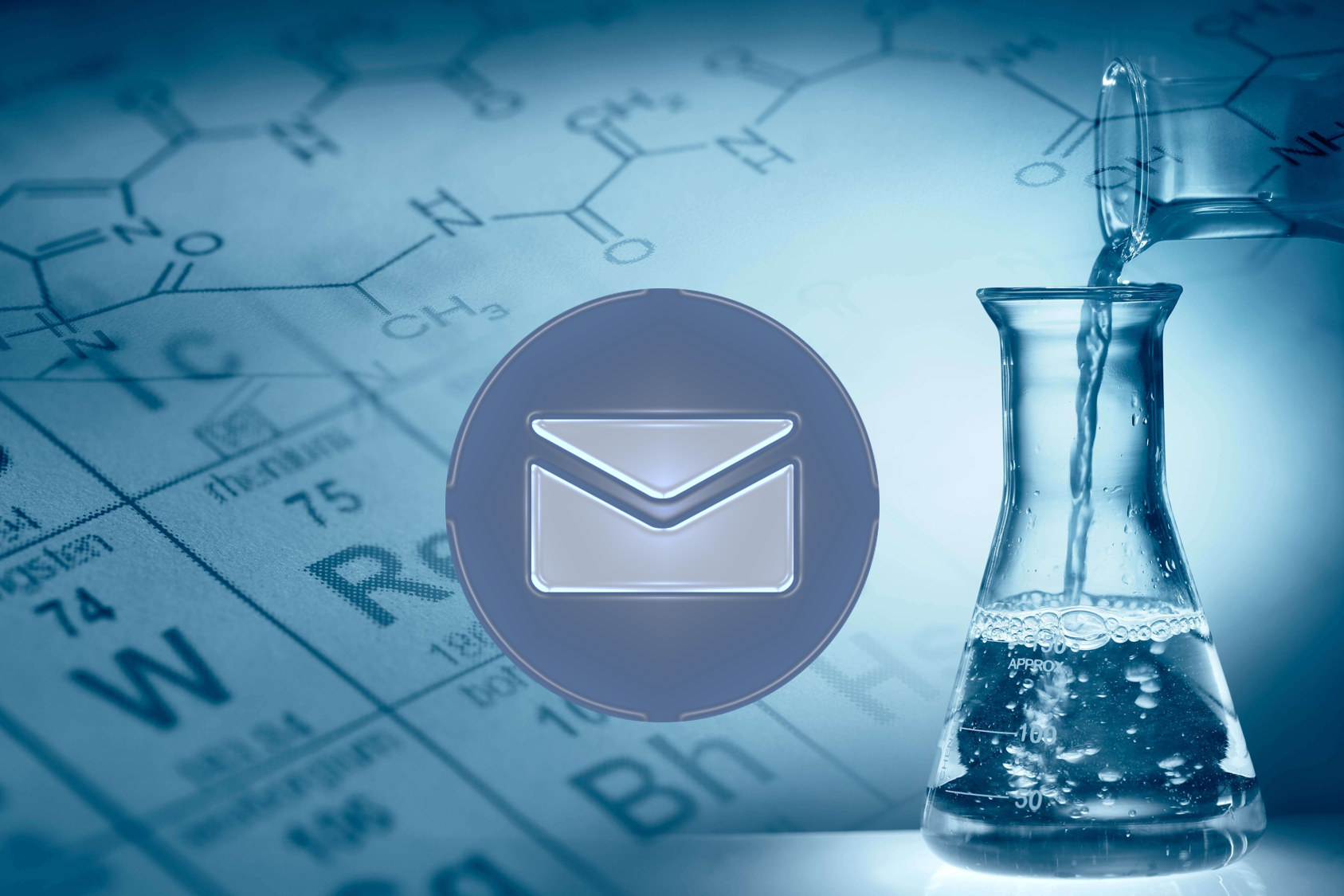
Given the disruption our industry has faced over the past year, marketing is a priority for radio. Millions have picked up stakes, moving to new cities and states. For radio, that means introducing a station to new listeners, while re-introducing former ones, as they return to their workplaces.
But given the revenue performance of the industry over the past many quarters, marketing dollars are at a premium. That’s a nice way of saying that for most stations, promotional budgets are non-existent. But smart stations have a weapon – a virtually free way to regularly communicate with its biggest fans.
Email.
Throughout COVID, Jacobs Media relied on email databases to conduct more than a half dozen surveys among commercial, public, and Christian music radio stations, not to mention Techsurveys for those same groups of stations. We relied on all those aggregated email addresses to conduct more than 50 Zoom L.A.B groups.
But that’s research. When it comes to marketing, email is even more personal and more powerful – especially if your station has a data-driven system that works.
Sadly, most do not. Email is often an afterthought at most stations. Our Techsurveys often reveal things about the composition of a radio station’s database the core management team should know – but often doesn’t.
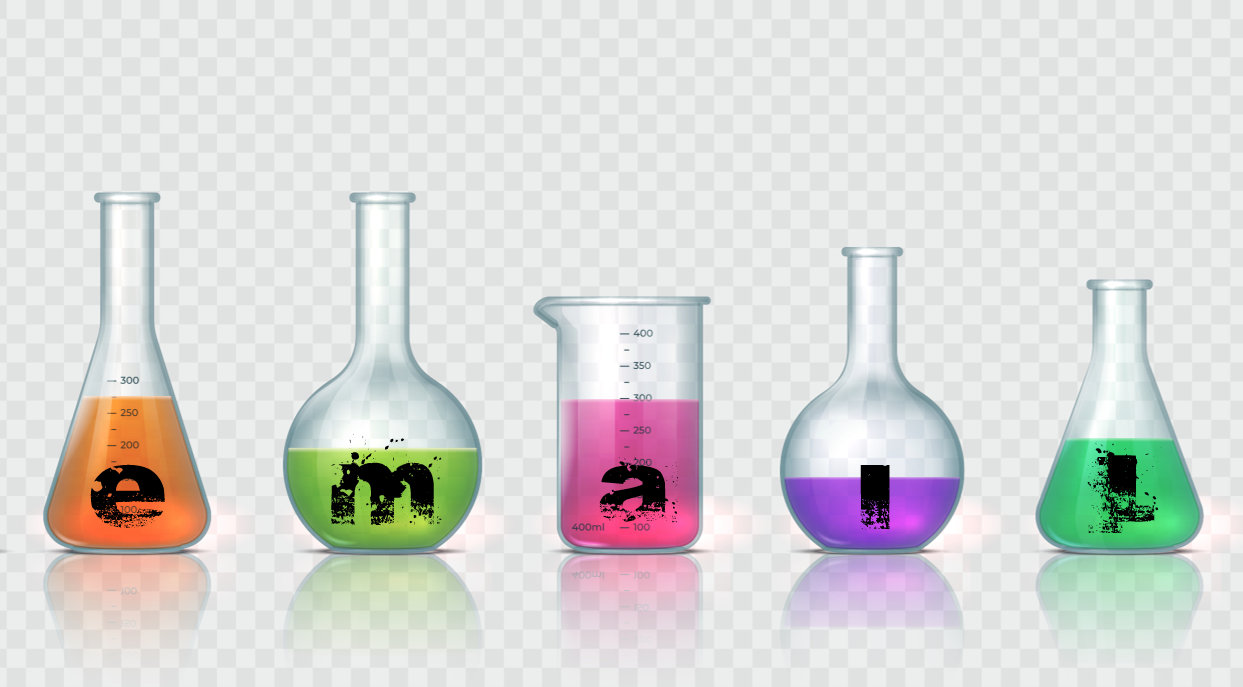
While there are many “best practices” guides for email, none is especially scientific. Until now.
MarTech – a consortium of tech-driven marketers – has released its updated version of its “Email Marketing Periodic Table” that lists the variables that make for successful email strategies.
You probably remember the real deal – the “Periodic Table of the Elements” that hung on the wall in every high school chem lab, containing all those elements – from gold to lithium. Yes, even the noble gases. The chart is so familiar it shows up everywhere. You can even buy a shower curtain, showing off all those elements (Wayfair, $69.99).
I can’t speak for your educational background, but most of my scientific knowledge I picked up by watching Bill Nye and Walter White, with Thomas Dolby playing in the background.
Thanks to MarTech, the “science” of email marketing is well-organized by topic (optimization, deliverability, as well as toxins and traps – which often scuttles campaigns). There are key subcategories, including Compliance, Audience (a big one for radio), Trust, Infrastructure, and Content.
Put together by Kim Davis, you can access the full report here. It’s great reading, and a wonderful way to check off all the key boxes. As Davis notes, “Digital marketing is indeed an art, but it is also a science.”
Here’s MarTech’s handy chart:
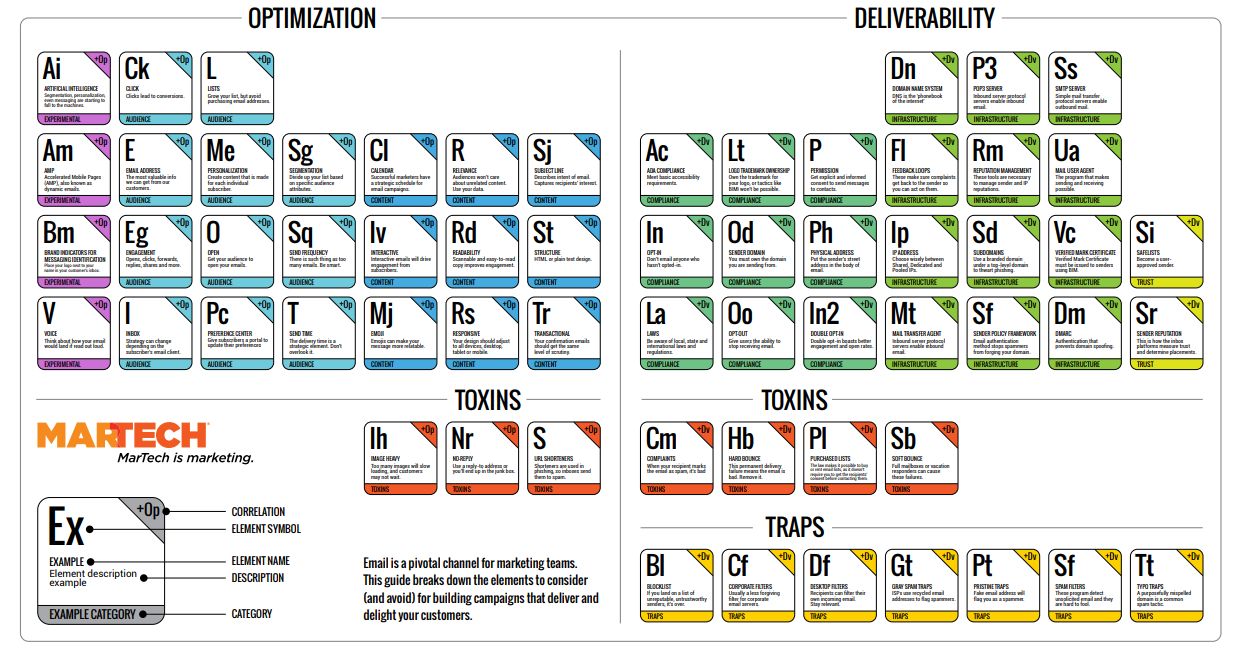
MarTech’s report is loaded with smart data (see the chart below), as well as sage observations about what works – and what doesn’t. Of course, “your mileage may vary,” as they say, given the nature of your brand, your email track record, and the degree to which you’ve put resources behind your email program. Here are the numbers to beat, including “open rate” and “click-to-open rate,” as well as the devices most often used to open emails (yes, the smartphone is key here):
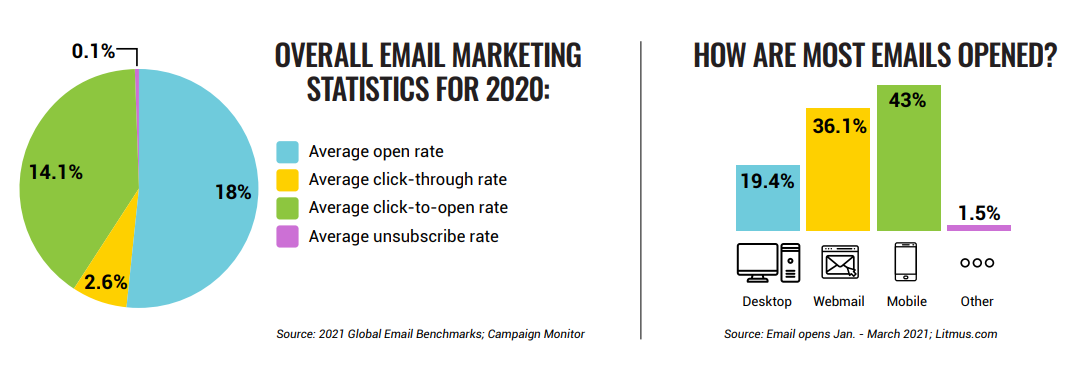
Of course, I donned my lab coat, conjured up my inner-Mr. Wizard, and worked on a few elements of my own, based on our experience over the past 25 years of email database marketing. Put on your safety goggles, and check them out:
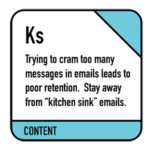
Kitchen sink emails – multiple message emails – can be efficient ways of packaging several messages in an email – promotions, sales, events, etc. There’s just one problem – they don’t work.
That’s because most of us stop reading long emails early on. And even for people who slog through your entire email communiqué, chances are they won’t retain most of its contents.
There’s a reason we coach “one thought per break” when working with talent. It’s the most effective way of getting an ADD-addled audience to remember a main message.
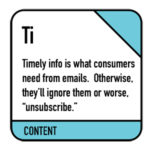 There’s nothing worse than getting an email from a trusted media outlet that doesn’t have a sensible, timely reason to exist. But how often are we on the receiving end of emails that are important to the sponsor, but have no relevance to the end user?
There’s nothing worse than getting an email from a trusted media outlet that doesn’t have a sensible, timely reason to exist. But how often are we on the receiving end of emails that are important to the sponsor, but have no relevance to the end user?
It’s essential email messages have a purpose, a raison d’être.
When listeners are blasted with untimely emails, they’ll either start deleting them, or worse, hitting “unsubscribe.”
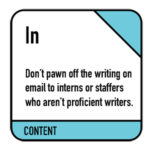 Email marketing is critically important. More people may see them than hear your station promos. And because they’ve opted in, they are your most valued audience members – your Super P1s.
Email marketing is critically important. More people may see them than hear your station promos. And because they’ve opted in, they are your most valued audience members – your Super P1s.
They deserve the best-crafted messages possible. But too often over the years, program and marketing directors delegate the writing task to a lower level employee – even interns.
The very best writer on staff should be the ones creating the messaging for your email campaigns. These missives are too important to leave to chance.
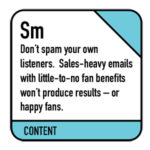 There’s a tendency to spam email database members, often adding an email blast as part of an advertising campaign. Or worse, as the dreaded “value-added.”
There’s a tendency to spam email database members, often adding an email blast as part of an advertising campaign. Or worse, as the dreaded “value-added.”
Don’t use your email database as a dumping ground for sponsor messaging. Campaigns should be constructed with both the client and the recipient in mind. For the latter, ask yourself WIIFT – What’s in it for them?” If the answer is merely about advertiser fulfilment, you’re spamming your VIP listeners.
 Yes, we’re in the audio business, but video is powerful. More people stream video than audio – by far. So, an email message from your station with a funny, timely, clever, sticky video might achieve higher open rates (mention it in the subject line).
Yes, we’re in the audio business, but video is powerful. More people stream video than audio – by far. So, an email message from your station with a funny, timely, clever, sticky video might achieve higher open rates (mention it in the subject line).
Just as importantly, it might get shared with your P1s “social network” – the Holy Grail of email marketing. Smart, short, clever videos (think TikTok) can enhance an email campaign, and truly have an impact on branding and listening.
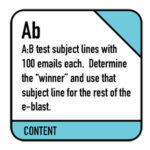 And now the hard-part. A:B test your subject lines. Create two of them – perhaps one emphasizing a personality and the second about a contest. But each email’s content is the same.
And now the hard-part. A:B test your subject lines. Create two of them – perhaps one emphasizing a personality and the second about a contest. But each email’s content is the same.
Send out test runs of each to a hundred or so members of your email database. Then analyze the open rates. The “winner” should be the subject line you then use on the main email blast – the one that goes to thousands of your biggest fans.
After a while, you learn the subject line content and style that’s most effective in capturing attention, and driving open rates.
Hopefully, today’s science lesson wasn’t too painful. And the good news – no pop quizzes, midterms, or blue book exams.
But for radio stations that need strong marketing efforts over the second half of 2021, email can be your most potent weapon.
You just need great chemistry.
- Media And Technology In 2025: Believe It Or Not! - April 18, 2025
- In Radio, You Just Never Know - April 17, 2025
- The Secret To Making A Great Podcast (And Great Radio) - April 16, 2025




Leave a Reply